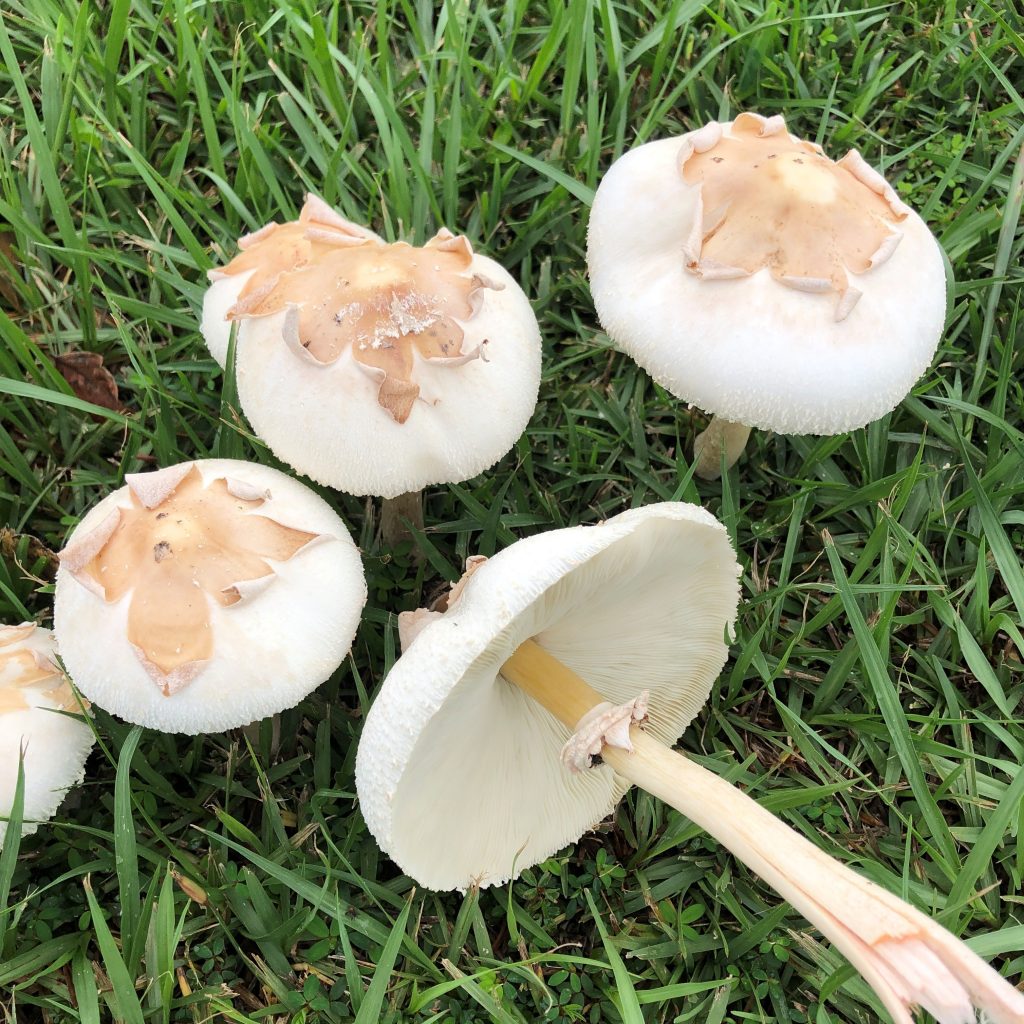Heavy rains bring out mushrooms just about everywhere we look. They appear in our yards, on rotting logs, and on the dead trunks of trees. Whether as a single mushroom or patches of many, they make their appearance known through their bright colors and shapes. But why do we sometimes see rings of mushrooms in our mowed lawns or public spaces where there are no logs or trees?

The reason that these mushrooms form a ring is all about their source of food – the dead roots of a tree that once stood in the center of each ring. Over time, often many years, the fungus that lives within the dead tissue buried in the groundworks its way from where the original trunk once stood, out along the now dead roots in all directions. The grass growing under the ring of mushrooms often appear brighter in color, a reflection of higher levels of nitrogen released by the fungi as they decompose the roots.
Fairy Rings are, therefore, a sign of the past: the site where a tree once stood. The fungi point to the spot of the original trunk, but also the path that the roots once took to support that tree. Fairy Rings show us just how extensive roots can be. Roots often reach out well past the trunk and the branches of trees where they work to collect water and nutrients from the soil.
Next time you walk beneath a living tree, remember the story of the Fairy Rings and think about the vast root system beneath your feet. Walk lightly and the tree will do well. Park cars or pile dirt on top of the soil beneath a tree and it will become sickly and die. There are enough Fairy Rings in the world. We do not need to encourage new ones.
Hope to see you in our great outdoors!




